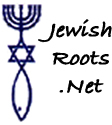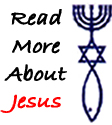






In the original 1611 printing of the King James Bible, between the conclusion of the Hebrew cannon and the opening words of the New Testament, the KJV translators nestled the Apocrypha, written during the 400 silent years.
Because there was no word from the Lord during this period, the Apocrypha was never embraced by the Jewish people or the apostles. In fact, it is filled with what Bible teachers have called "historical, geographical, and ethical errors"; and it "failed to impress upon the reader any mark of divine origin."(1)
In 1564 at the Council of Trent, the Roman Catholic Church fully embraced the Apocrypha as Scripture and integrated its 14 books into the Bible. For example, the addition to Daniel was placed with Daniel, so on and so forth. The Roman Catholic Church refers to these writings as the deuterocanonical books, or second cannon.
Protestants refer to them as apocrypha, meaning "hidden, spurious, of disputed or questionable authority." the Puritans and Presbyterians lobbied for the Apocrypha's removal, and in 1826 the British and Foreign Bible Society refused to allow its funds to be used to pay for printing it.(2) By 1885 Protestant Bibles no longer carried it.
Though these books were known and circulated during Jesus' ministry and the days of the apostles and early church fathers, they were never respected as canonical and were discounted by the Protestant reformers. Yet they do offer curious facts and interesting historical information, particularly in 1 and 2 Maccabees.
According to the Wycliffe Bible Encyclopedia, they are "commonly dated from the 2nd century B.C. to the 1st century A.D." and deal with "persons, events, and themes closely related to OT (Old Testament) and post OT figures."(3)
The names of the apocryphal books are 1 and 2 Esdras; Tobit; Judith; The Rest of Esther; Wisdom of Solomon; Ecclesiasticus; Baruch, With the Epistle of Jeremiah; The Song of the Three Children; The Story of Susannah; The Idol, Bel, and the Dragon; The Prayer of Manasses; and 1 and 2 Maccabees.
Though all the authors are generally unknown, they were clearly Jewish and composed the texts during the Intertestamental Period.
Miscellaneous:
Written by Thomas C. Simcox. Reposted with permission.
Israel My Glory, November/December 2012
1) "Biblical introduction: Canon, Manuscripts & Versions, Inspiration, Hermeneutics" (disseminated notes, Philadelphia, PA: Philadelphia College of Bible, 1970), 11.
2). Christian Clay Columba Campbell, "Cambridge University Press to Reprint KJV With Apocrypha," The Anglo - Catholic, April 13, 2010 <tinyurl.com/yyapagg>
3). Charles F. Pfeiffer, Howard F. Vos, and John Rea, eds., "Attitudes Toward OT Apocrypha," Wycliffe Bible Encyclopedia, paperback ed. (Chicago, Il, Moody Press, 1983), 111.
For more information on this subject please contact:
The Friends of Israel Gospel Ministry, Inc.
PO Box 908
Bellmawr, NJ 08099
Customer Service: 800-257-7843
http://www.foi.org/